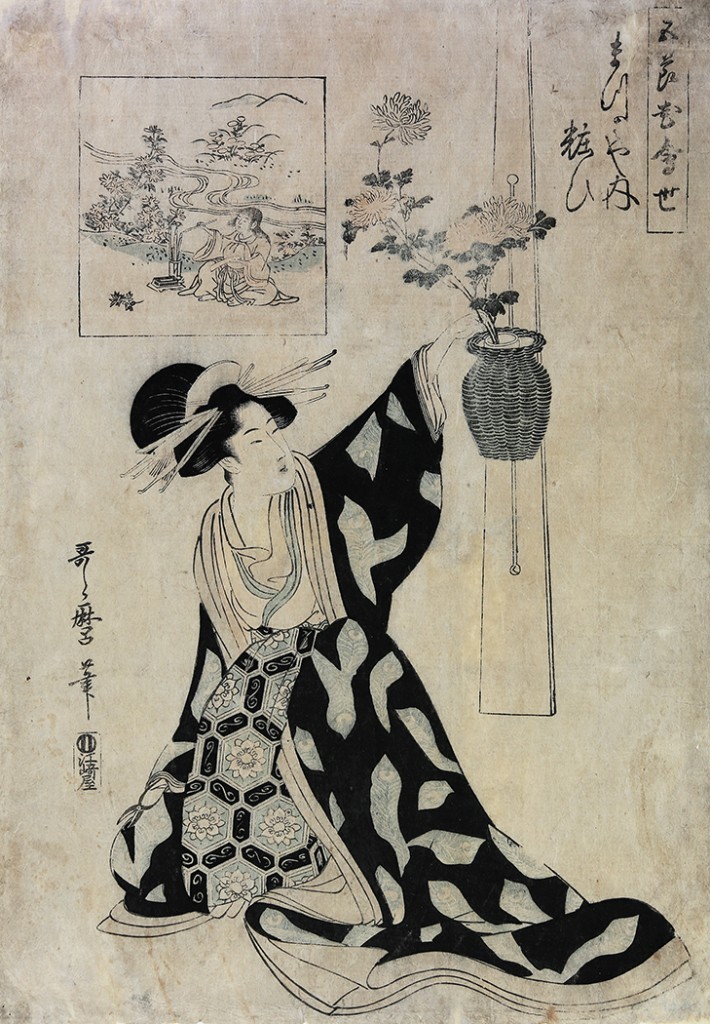
Somando of the Ôgiya features a kneeling woman dressed in flowing robes with her hair styled in an elaborate coiffure called a yoko-hyogo (横兵庫). She holds a vase full of flowers with her left hand, presenting an excellent example of the Japanese art of flower arrangement called ikebana (生け花). In ikebana natural flora such as flowers and branches are arranged to create a harmonious, balanced, and elegant composition. The beauty of ikebana comes from graceful lines, color harmony, and a minimalist aesthetic.[1] As an art form, ikebana demonstrates a connection to nature valued by many Japanese.[2]
The title of this print refers to the Ôgiya (扇屋) House, a brothel in the Pleasure District of Yoshiwara in Edo.[3] The woman depicted is Somando, a courtesan or oiran (花魁), from the Ôgiya House. At this time, Japanese courtesans were upper class sex workers, who lived elegant lifestyles by serving wealthy clientele.[4] Several high-ranking courtesans became famous and were treated as celebrities.[5] Similarly to geisha, oiran were educated in ikebana as well as in tea ceremonies, or sado (茶道), and calligraphy, or shodo (書道).[6]
Kitagawa Utamaro is renowned for his beautiful portraits of courtesans. Through his artwork, we are able to gaze into the intimate lives of Edo-Period oiran.
-Mandy Prue, Class of 2016
Sources:
